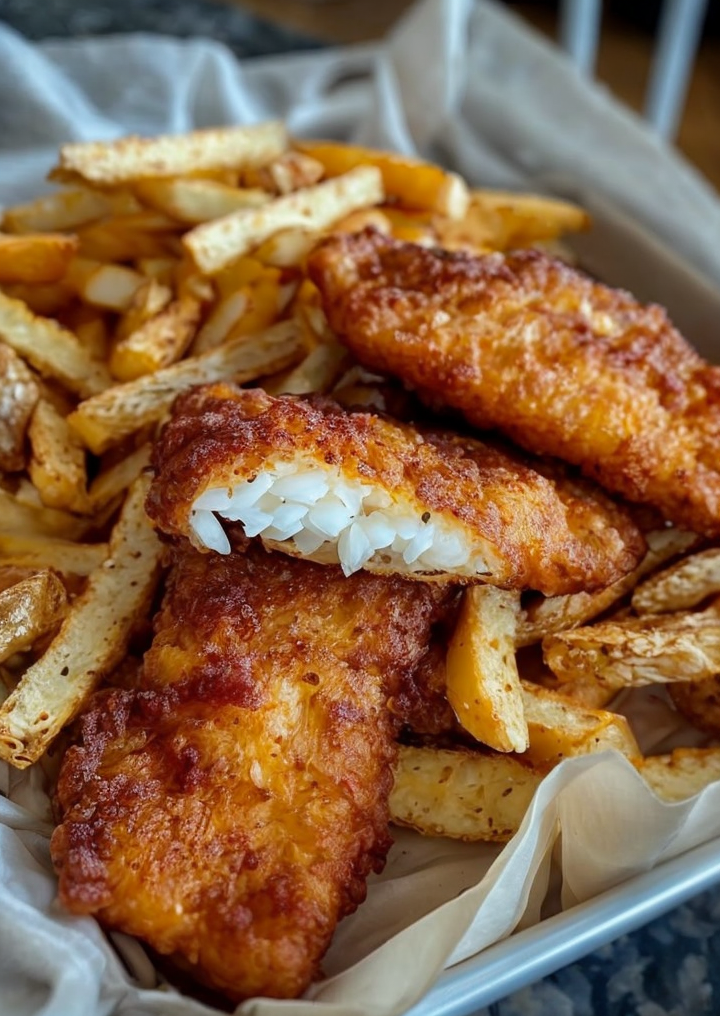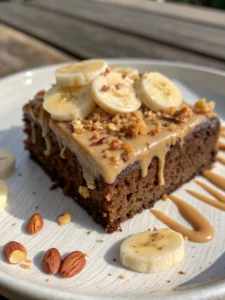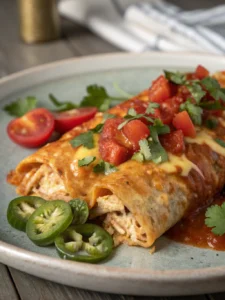Would You Eat These Fish Fingers and Chips? Discover the Ultimate Recipe!
Get ready to savor the flavors of a classic British favorite: fish fingers and chips. This mouthwatering dish combines crispy, golden fish fingers with perfectly salted chips. With its crunchy exterior and tender fish inside, it’s a meal loved by children and adults alike. Imagine a weekend evening at home, enjoying these homemade delights with your loved ones. Not only are they incredibly delicious, but these fish fingers and chips are also simple to prepare, making them an ideal choice for busy weeknight dinners.
Quick Recipe Highlights
- Flavor Profile: Savory fish encased in a light, crispy batter, paired with hearty, seasoned chips.
- Texture: Crisp on the outside, tender and flaky within.
- Aroma: The enticing smell of freshly fried fish and potatoes.
- Visual Appeal: Golden-brown fish fingers and golden chips, crispy and inviting.
- Skill Level Needed: Requires basic frying skills; suitable for intermediate cooks.
- Special Equipment: Deep fryer or skillet, paper towels.
Recipe Overview
- Difficulty Level: Medium due to frying techniques and timing for both fish and chips.
- Category: Comfort food, ideal for lunch or dinner.
- Cuisine: British-inspired with a modern twist.
- Cost: Moderately priced; fish is the primary cost factor.
- Season: Best enjoyed year-round, especially in cooler months.
- Occasion: Perfect for family dinners, casual gatherings, and weeknight meals.
Why You’ll Love This Recipe
The taste and texture appeal of fish fingers and chips are unparalleled. The combination of a crispy, golden exterior with a soft and juicy interior creates a delightful contrast that pleases the palate. This dish is easy to make, offering the convenience of simple preparation and the comfort of a tried-and-true recipe. Nutritionally, it offers a good balance of protein from the fish and carbohydrates from the potatoes. Serving this dish at gatherings can be a crowd-pleaser, making it a versatile option for social occasions. Cost-effective and accessible, this recipe makes use of everyday ingredients, ensuring it fits within most budgets while delivering an unforgettable culinary experience.
Historical Background and Cultural Significance
Fish fingers and chips, a staple in British cuisine, have roots tracing back to the 19th century. Originally served as street food, its popularity surged in seaside towns. It’s culturally significant, representing comfort and nostalgia for many. Over time, the recipe evolved, incorporating diverse spices and techniques to suit global tastes. Various regions have developed their unique takes on this dish, emphasizing local fish varieties and preparation styles.
Ingredient Deep Dive
The fish used in this recipe is not just a key ingredient, but it also brings with it a rich cultural history. Typically, cod or haddock are preferred for their flaky texture and mild flavor. They offer an excellent source of protein and omega-3 fatty acids, essential for a healthy diet. When selecting fish, freshness is paramount – look for clear eyes and a clean smell. Store in a refrigerator and use within a couple of days for best results. If cod is unavailable, pollock or a firm white fish are good substitutes.
Common Mistakes to Avoid
- Using wet fish – pat dry to ensure the batter sticks.
- Overcrowding the fryer – leads to uneven cooking and soggy texture.
- Incorrect oil temperature – causes uneven browning.
- Not seasoning fish – results in bland taste.
- Using old/stale breading – affects texture and flavor.
- Rushing resting time – essential for setting batter and cooling.
- Skipping pat drying – causes moisture retention in chips.
- Using cold oil – prevents proper frying and crispiness.
- Overcooking fish – leads to dry, tough texture.
- Forgoing timers – critical for managing cook times effectively.
Essential Techniques
Mastering the frying technique is crucial for achieving the perfect fish fingers and chips. Maintaining the correct oil temperature ensures crispiness without burning. Use a thermometer to monitor the temperature precisely. Avoid crowding the pan as it lowers the oil’s temperature and results in soggy exteriors. Visual cues such as a golden-brown color and a cooked-through look help achieve success.
Pro Tips for Perfect Fish Fingers and Chips
For an extra crisp finish, double fry the chips after letting them cool from the first fry. If the batter looks too thick, thin it with a bit of cold water or club soda for a lighter texture. Ensure your oil is hot enough before adding the fish, as a drop in temperature can lead to absorption of excess oil. Consider using panko breadcrumbs for added crunch. Rest the battered fish on a cooling rack for a few minutes before frying to prevent unwanted sticking.
Variations and Adaptations
This traditional recipe can be adapted for various dietary needs and preferences. For a gluten-free version, use rice flour and gluten-free breadcrumbs. Introduce seasonal herbs and spices, such as dill or lemon zest, to the batter for a unique twist. For a low-fat version, try baking the fish fingers instead of frying. Presentation-wise, you can opt for bite-size fingers for a party appetizer.
Serving and Presentation Guide
Serve the fish fingers and chips on a large platter with fresh lemon wedges and tartar sauce on the side. For garnishing, fresh parsley adds a bright pop of color and flavor. Traditional accompaniments include mushy peas and malt vinegar, while modern servings might integrate a fresh green salad. Maintain portions by offering four fingers and a scoop of chips per person.
Wine and Beverage Pairing
A crisp white wine such as Sauvignon Blanc or a light beer complements the dish without overpowering it. For non-alcoholic alternatives, sparkling water or lemonade refreshes the palate. Consider offering iced tea during warmer months, adding a slice of lemon for extra aroma.
Storage and Shelf Life
Store leftovers in an airtight container in the refrigerator for up to two days. When reheating, use an oven to maintain crispiness, avoiding the microwave, which can render them soggy. Fish fingers and chips do not freeze well due to potential texture changes, so it’s best to enjoy them freshly made.
Make Ahead Strategies
Prepare the batter and cut the chips ahead of time, keeping them refrigerated until needed. Fry chips first and keep them warm in the oven while you prepare the fish. This ensures everything is served hot and fresh.
Scaling Instructions
To accommodate different servings, simply adjust ingredient quantities while maintaining the same cooking times. For larger batches, use multiple pans or fryers to avoid overcrowding. Store batches separately to manage reheating times efficiently.
Nutritional Deep Dive
The fish fingers and chips provide a balanced nutritional profile, offering a good source of protein and carbohydrates. Fish provides essential omega-3 fatty acids and vitamins, promoting heart health. While the dish can be high in calories due to frying, using quality oils and proper preparation methods helps manage this aspect.
Dietary Adaptations
For gluten-free variations, substitute standard breadcrumbs with gluten-free alternatives and ensure flour used is suitable. Dairy-free recipes can comfortably follow the original, with no need for milk. Adjusting to a keto or low-carb diet might involve replacing breadcrumbs with almond or coconut flour to fit within dietary restrictions.
The Recipe
Fish Fingers and Chips
Serves: 4
Prep Time: 20 mins
Cook Time: 25 mins
Total Time: 45 mins
Kitchen Equipment Needed
- Deep fryer or heavy skillet
- Slotted spoon
- Mixing bowls
- Cooling rack
- Kitchen thermometer
Ingredients
- 500g firm white fish fillets (e.g., cod or haddock)
- 200g plain flour
- 200g breadcrumbs or panko
- 2 large eggs, beaten
- Salt and pepper to taste
- 300g potatoes, cut into wedges
- 1 liter vegetable oil for frying
- Lemon wedges for serving
Directions
- Heat oil in a deep fryer or heavy skillet to 180°C (350°F).
- In a bowl, season the flour with salt and pepper. Set up a breadcrumb station by placing flour, eggs, and breadcrumbs in separate shallow dishes.
- Coat each fish piece in flour, dip in egg, then cover with breadcrumbs, pressing gently to ensure they adhere.
- Fry fish fingers in batches for 4-5 minutes until golden brown. Remove with a slotted spoon and drain on paper towels.
- For the chips, fry potato wedges in oil for about 8-10 minutes until golden and crispy. Drain on paper towels.
- Serve hot with lemon wedges and your choice of sauce.
Recipe Notes
- You can add spices like paprika or chili powder to the breadcrumbs for an added kick.
- Ensure oil temperature remains consistent during cooking.
Troubleshooting Guide
Ensure your oil is at the right temperature to solve any sogginess issues. If the fish is overcooked, ensure the timing specified is not exceeded. If the seasoning isn’t sufficient, try seasoning flour and breadcrumbs with additional salt or herbs. Adjust oil types and quantities based on availability, and always adhere to safe frying practices to avoid splatter burns.
Recipe Success Stories
Many in our community have successfully adapted their fish fingers by using gluten-free flours and still achieved perfect results. Family gatherings have been enlivened by doubling the recipe, making it a staple at events. Share your photos and variations on social media for a chance to be featured in our weekly roundup, encouraging others to try and enjoy this dish.
Frequently Asked Questions
Can I bake the fish fingers instead of frying?
Yes, bake them in a preheated oven at 200°C (400°F) for 15-20 minutes or until golden and crispy.
What’s the best oil for frying?
Vegetable or canola oil is recommended due to their high smoke points and neutral flavor.
Can I use sweet potatoes for the chips?
Absolutely! They provide a delicious, slightly sweet counterpart to the savory fish.
How do I prevent the breadcrumbs from falling off?
Ensure the fish is dry prior to breading and press the breadcrumbs firmly onto the surface.
Is it possible to prepare ahead of time?
Yes, you can bread the fish a few hours in advance and refrigerate them until ready to fry.
What can I do with leftover fish fingers?
They’re excellent in sandwiches or salads for the next day.
Why is my batter not sticking?
Make sure the fish is dry and the oil is hot enough; cold oil can cause the batter to slip off.
How do you reheat without losing crispiness?
Use an oven at 180°C (350°F) for ten minutes to help retain the crunch.
Additional Resources
For those interested in exploring more fish recipes, check out our guide on “Perfectly Pan-Seared Fish,” which offers tips on getting the perfect crust. Our detailed ingredient guides include information on various fish types and their culinary uses. Equipment recommendations can be found in our “Best Tools for Home Cooks” article.
Join the Conversation
We invite you to join our cooking community on social media, sharing your creations and experiences with others. Your reviews and ratings help guide future recipes, and we’re excited to see your photos of innovative variations. Engage in discussions with fellow cooking enthusiasts and expand your culinary horizons with each recipe you try.



